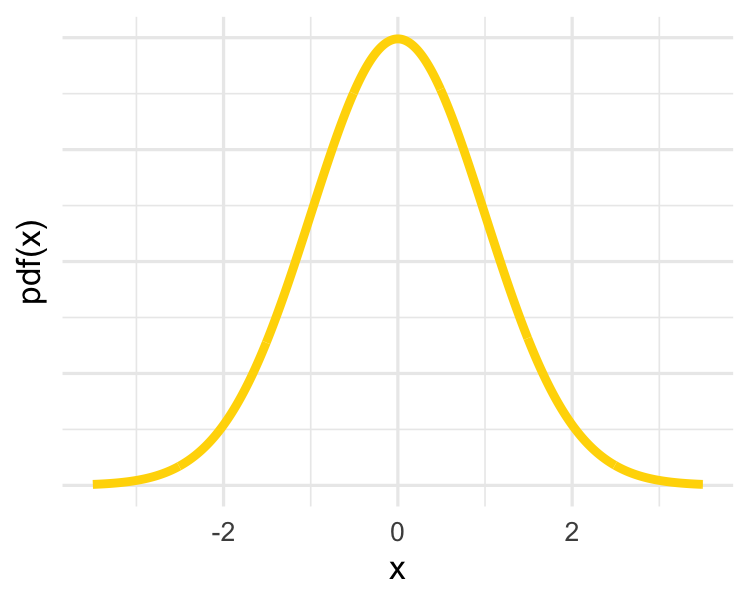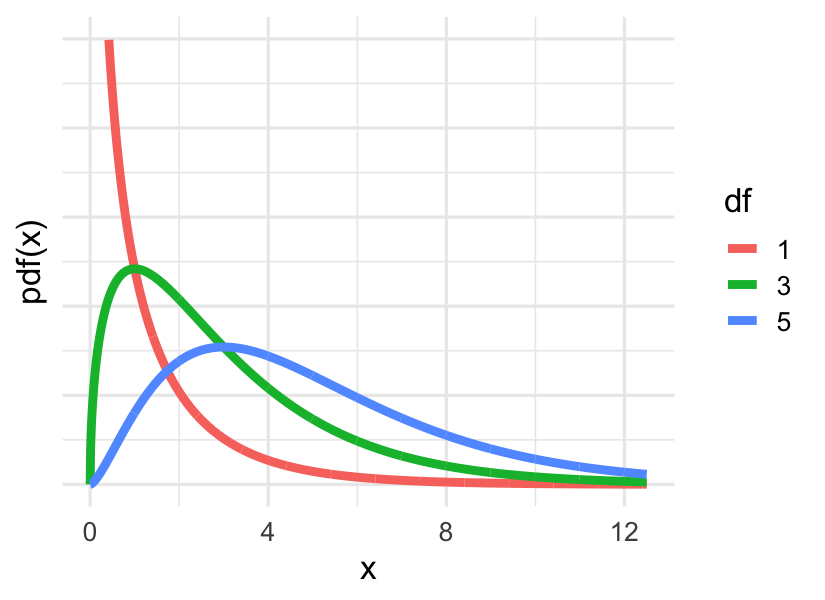Alternate method: the chi-squared distribution
Inference for Categorical Data in R

Andrew Bray
Assistant Professor of Statistics at Reed College
Approximation distributions: normal
- Statistics: $\hat{p}, \hat{p}_{1} - \hat{p}_{2}$

Approximation distributions: chi-squared
- Statistics: $\hat{x}^{2}$
- Shape is determined by degrees of freedom
- $df = (nrows - 1) \times (ncols - 1)$

H-test via approximation
null_spac <- gss_party %>%
specify(natspac ~ party) %>%
hypothesize(null = "independence") %>%
generate(reps = 100, type = "permute") %>%
calculate(stat = "Chisq")
ggplot(null_spac, aes(x = stat)) +
geom_density() +
stat_function(
fun = dchisq,
args = list(df = 4),
color = "blue"
) +
geom_vline(xintercept = chi_obs_spac, color = "red")

H-test via approximation
gss_party %>%
select(natarms, party) %>%
table()
party
natarms D I R
TOO LITTLE 17 20 24
ABOUT RIGHT 14 28 8
TOO MUCH 12 24 2
pchisq(chi_obs_spac, df = 4)
X-squared
0.1430612
1 - pchisq(chi_obs_spac, df = 4)
X-squared
0.8569388

The chi-squared distribution
Becomes a good approximation when:
- $expected\_count >= 5$
- $df >= 2$

Let's practice!
Inference for Categorical Data in R

